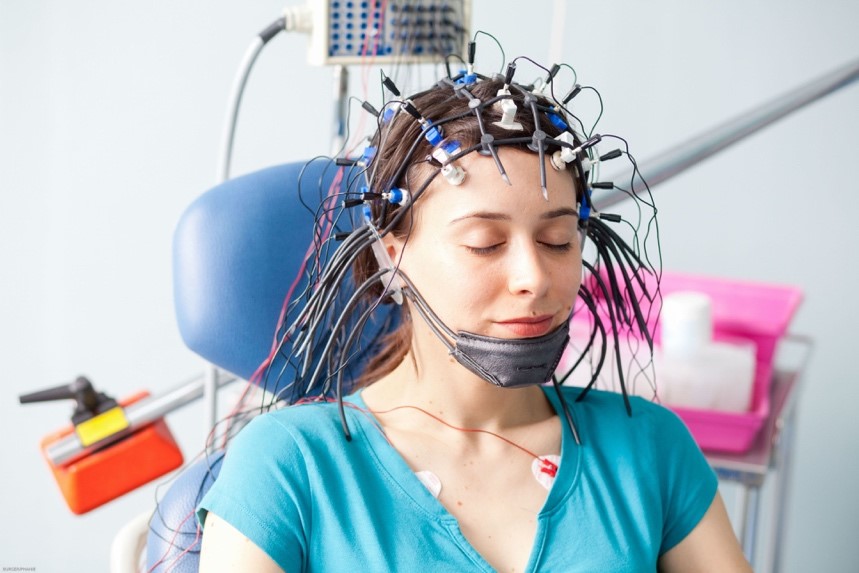BNA Annual General Meeting 2025
1st April 2025
17th Jan 2022
Technological advances in the field of neuroscience provide exciting opportunities for the development of novel study designs and approaches. However, before they can be successfully applied in research, it is vital we understand their practical limitations.
In a recent article in the British Neuroscience Association (BNA) journal, Brain and Neuroscience Advances, authors Marta Topor (a 2021 BNA Credibility Prize winner), Bertram Opitz and Philip Dean explored water-based electroencephalography (EEG), a method used in neuroscience research to record the brain’s electrical activity, in order to establish validity of the technique for neuroscience research.

EEG is a very popular technique used by many researchers across the world as it is non-invasive and can be relatively uncomplicated. The recordings are performed with the use of electrodes, which are placed on the scalp with - typically - a conductive gel substance.
Water-based EEG is relatively new. It offers a number of advantages, but does it produce high quality data?
In a water-based EEG system, electrodes are soaked in tap water instead of the commonly-used gel. This brings many benefits including better user comfort, simpler and faster preparation, reduced procedure time and easier clean-up (e.g. users do not have to clean their hair after taking part).
These factors reduce barriers to participation and are of particular benefit when lengthy procedures are problematic, for instance, in the case of participating children or individuals with poor concentration.
However, before using this equipment in their studies, the team needed to ascertain whether it could achieve a similar level of data quality as the standard gel-based systems. To do so they conducted a comparison study where participants completed a computer task whilst they recorded their brain activity with a gel-based system and later with a water-based system. The team looked at the amount of non-brain related signal (“noise”) in the recordings and whether this affected the analyses of brain activity.
The study found that the water-based equipment registered more “noise” compared to the gel-based system. This led to an increased amount of discarded EEG data, which is undesirable because data loss makes experiments less sensitive to detect effects of interest.
In addition, some characteristics of the analysed EEG were not consistent with those recorded with the gel-based system. For instance, one of the brain signals of interest moved from an expected central scalp area to a more frontal scalp area for the water-based system, likely caused by the “noise”, which compromised the brain signal of interest and would affect the conclusions drawn from the data.
The study's conclusion was that this novel water-based approach may affect data quality and the ability to find effects of interest, highlighting specific issues relating to data quality when using water-based EEG systems. The team therefore urges researchers to consider different practical solutions to prevent high “noise” levels and avoid false conclusions.
Click here to read the full article
About Brain and Neuroscience Advances
Brain and Neuroscience Advances is a peer-reviewed, open-access journal, which publishes high quality translational and clinical articles from all neuroscience disciplines; including molecular, cellular, systems, behavioural and cognitive investigations.
The journal welcomes submissions in basic, translational and/or clinical neuroscience. Research papers should present novel, empirical results that are expected to be of interest to a broad spectrum of neuroscientists working in the laboratory, field or clinic.
Brain and Neuroscience Advances is now indexed in PubMed Central.
Never miss the latest BNA news and opportunities: sign up for our newsletter